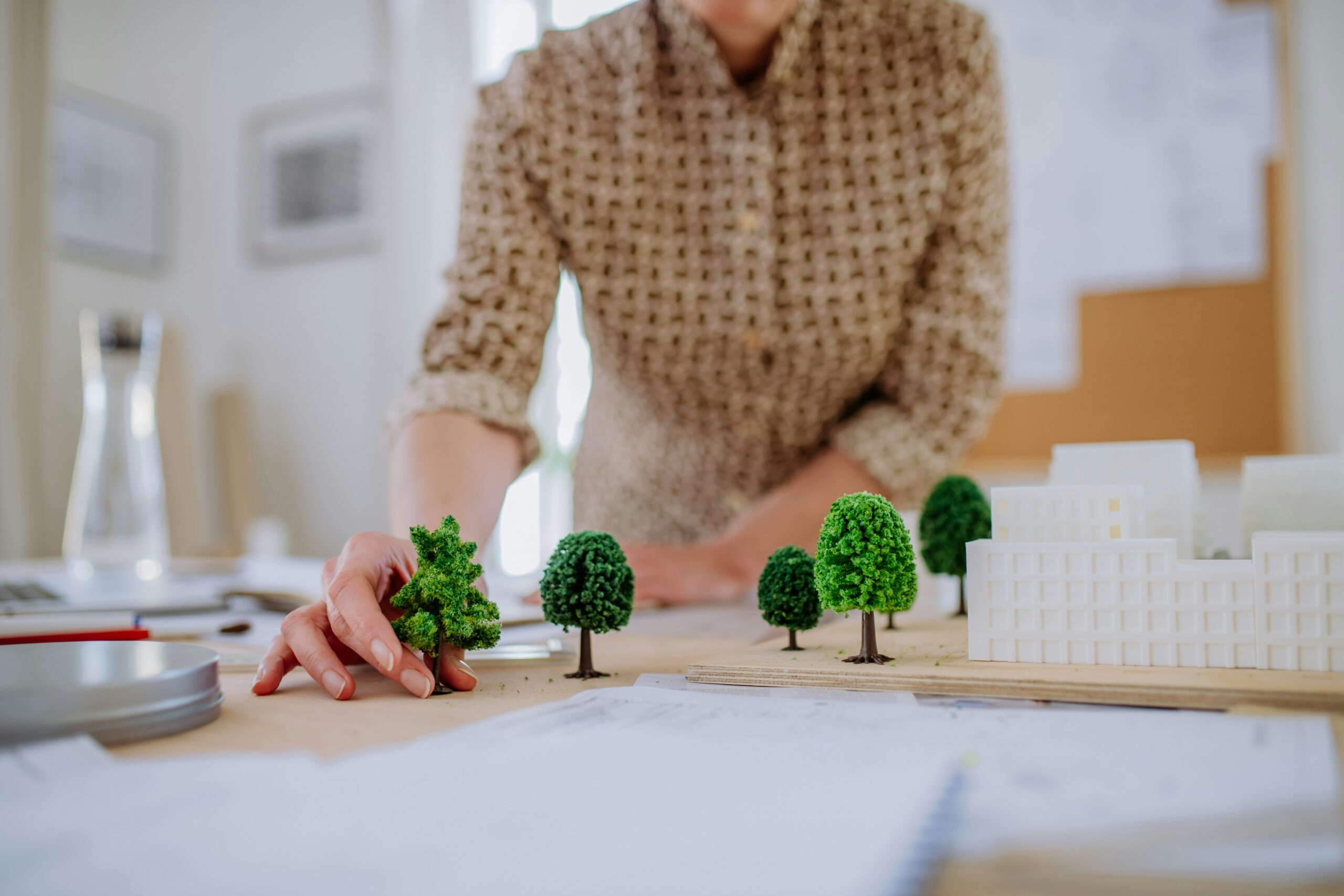How AI is Revolutionizing Architectural Design
AI has quickly become a valuable tool for architects and design professionals, assisting in everything from drafting to urban planning. Below, we’ll highlight the key ways this technology is making waves.
1. Automating Routine Tasks
AI can handle repetitive and time-consuming tasks, freeing architects to focus on higher-level creative work. Tasks like generating initial drafts of floor plans or optimizing building layouts are now automated using AI-powered tools.
For example:
- Software like Spacemaker uses AI to suggest optimal site layouts that maximize natural light, airflow, and space efficiency.
- AutoDesk’s generative design tools allow architects to input key parameters (e.g., spatial needs, materials, budget) and receive design options tailored to their specifications.
This automation not only saves time but also reduces human error, ensuring better outcomes.
2. Generative Design and Parametric Modeling
One of AI’s most fascinating applications in architecture is generative design, a process where AI algorithms produce countless design options based on input criteria.
Example: A London-based firm used AI to design a multi-level office with accident-resistant staircases by running thousands of simulations. AI allowed them to test different designs in minutes, something that would traditionally take weeks.
Parametric modeling tools like Grasshopper also leverage AI to create intricate, complex structures impossible to achieve with manual methods. Zaha Hadid Architects, for instance, frequently use such technology to design their iconic, futuristic works.
| Generative Design Benefits | Traditional Design Challenges |
|---|---|
| Quick generation of numerous options | Time-intensive manual revisions |
| Balances aesthetic with practicality | Requires more back-and-forth to optimize design goals |
| Responds to specific project inputs | Challenging to test multiple scenarios simultaneously |
3. Sustainability in Focus
Sustainability is a top priority in modern architecture, and AI is playing a crucial role in designing eco-friendly buildings. Some applications include:
- Predicting and reducing energy consumption with AI-based simulations.
- Optimizing material usage to reduce waste.
- Creating real-time models for green building certifications such as LEED.
Did you know? According to a McKinsey report, AI-powered design optimizations can reduce energy use in buildings by up to 20%, significantly cutting operating costs and environmental impact.
4. Enhanced Collaboration and Visualization
AI can bridge gaps between architects, engineers, and clients during a project. Tools like AI-driven 3D visualization software or virtual reality (VR) enable stakeholders to experience detailed building concepts before construction begins.
Platforms such as Enscape and Unity allow architects to walk clients through realistic virtual environments, transforming the decision-making process. These tools improve communication and help align visions, reducing misunderstood expectations.
Challenges of AI in Architecture
While AI brings immense value, it isn’t without challenges. Some common concerns include:
- Job Displacement Fears: Some architects worry that automation may diminish the need for human input. However, experts argue that AI complements, rather than replaces, human creativity.
- High Implementation Costs: Investing in AI tools and training can be expensive for smaller firms.
- Ethical Questions: Who owns an AI-generated design? Defining intellectual property rights in this space remains a gray area.
Pro Tip
To integrate AI seamlessly, start small. Research low-cost tools like Fologram or Modsy for visualization or explore free trials for generative design software like Rhino 3D. Build expertise gradually before making major financial commitments.
Real-World Examples of AI in Architectural Design
| Project Name | Description |
|---|---|
| The Flow Building in Prague | Used AI to match environmental sustainability with aesthetic modernity. |
| Autodesk Stinger Dome | Generated with automated parametric models to reduce steel weight by 30%. |
| Marina One in Singapore | AI optimized open green spaces to improve airflow and natural cooling. |
| Mumbai’s EON IT Park | Leveraged machine learning for energy-efficient lighting and building systems. |
| Shanghai Tower | AI helped reduce wind impact on the structure, cutting material costs by 25%. |
| Amsterdam’s Smart City Design | AI simulated traffic patterns for better urban flow and sustainability. |
| AECOM London | Used generative design for optimizing client-specific project proposals. |
| Kuwait International Airport Terminal | AI tools helped enhance thermal efficiency and structural geometry. |
Practical Tips for Architects Looking to Adopt AI
- Experiment with Open-Source Platforms
Tools like Dynamo or FreeCAD are great for experimenting without committing a budget. - Collaborate with Data Scientists
Partner with AI professionals to better understand how data can inform your projects. - Invest in Training
Encourage your team to learn cutting-edge platforms like Revit Extensions or TensorFlow. - Focus on Ethical Applications
Be mindful of the social and environmental implications of using AI in your designs.
FAQ Section
Q: Will AI replace architects in the future?
A: No. While AI can automate routine tasks, it’s not equipped to replace the creative thinking, problem-solving, and emotional insight architects bring to their work.
Q: What skills should architects develop in the age of AI?
A: Familiarity with data analysis, coding basics (e.g., Python), and proficiency in AI-powered tools like Grasshopper or Revit.
Q: Are AI tools affordable for small firms?
A: Many tools offer free trials or cost-effective tiers for smaller practices. Cloud-based platforms also provide scalable pricing.




Leave a Reply